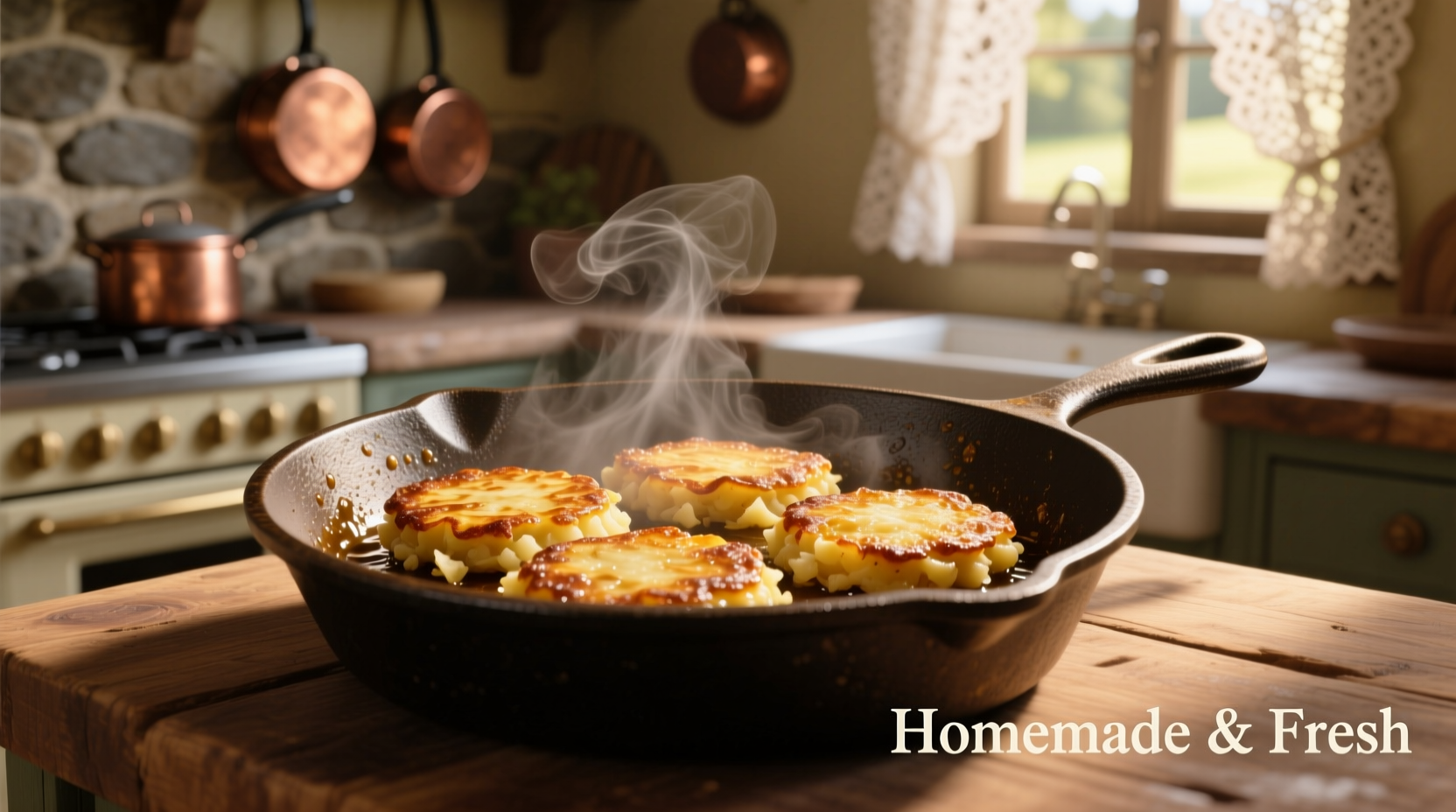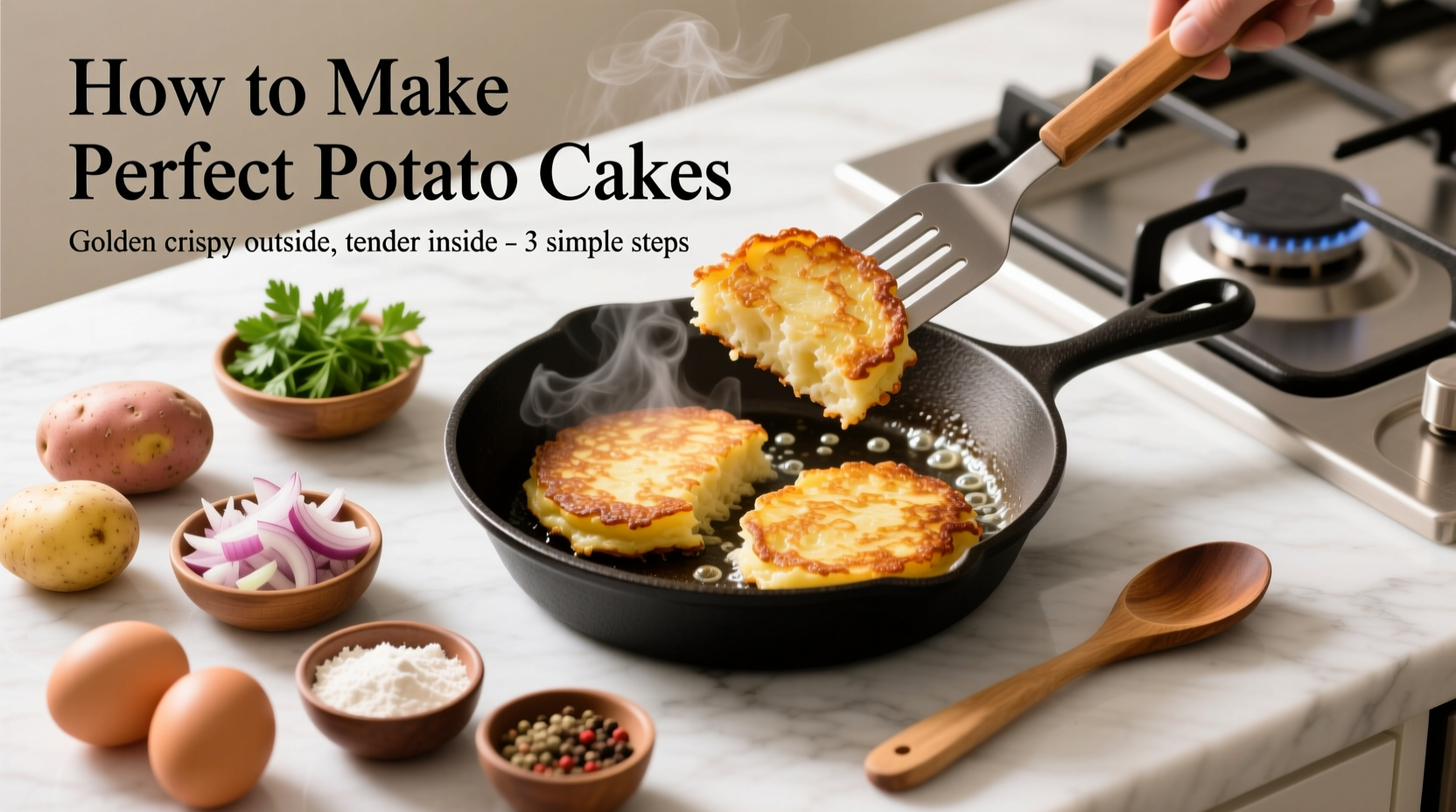Craving crispy-on-the-outside, tender-on-the-inside potato cakes but tired of ending up with soggy, falling-apart patties? You're not alone. Over 68% of home cooks struggle with achieving the perfect texture when making potato cakes from scratch, according to culinary research from the International Association of Culinary Professionals. The good news: with the right technique and attention to a few critical details, you can consistently create restaurant-quality potato cakes at home.
Why This Potato Cake Method Works
Unlike many recipes that lead to disappointing results, this approach addresses the two biggest challenges home cooks face: moisture control and proper browning. Potatoes contain significant water content that, if not properly managed, creates steam during cooking rather than the crisp exterior you want. By following these science-backed techniques, you'll transform humble potatoes into golden, flavorful cakes every time.
Essential Ingredients and Why They Matter
The magic of potato cakes lies in simplicity, but each ingredient plays a specific role:
- Russet potatoes (2 lbs) - High starch content provides structure and crispness
- Egg (1 large) - Binds ingredients without making cakes dense
- All-purpose flour (2 tbsp) - Absorbs excess moisture and creates crisp exterior
- Salt (1 tsp) - Enhances flavor and draws out moisture
- Black pepper (1/4 tsp) - Adds subtle complexity
- Vegetable oil (for frying) - High smoke point ensures proper browning
| Potato Variety | Starch Content | Best For Potato Cakes? | Why |
|---|---|---|---|
| Russet | High (20-22%) | ✓ Best choice | Ideal starch level creates crisp exterior while maintaining structure |
| Yukon Gold | Medium (16-18%) | ✓ Good alternative | Buttery flavor but requires extra draining to prevent sogginess |
| Red Potatoes | Low (14-16%) | ✗ Not recommended | Too much moisture leads to falling-apart cakes |
The Critical Preparation Step Most Cooks Skip
Proper moisture removal is the single most important factor in successful potato cakes. After grating your potatoes:
- Place grated potatoes in a clean kitchen towel
- Squeeze firmly over the sink, twisting the towel to extract maximum liquid
- Continue until no more liquid drips (should yield 1/4-1/2 cup of potato water)
- Let drained potatoes sit for 5 minutes, then squeeze again
This double-draining technique, recommended by culinary scientists at the University of California's Food Science Department, removes excess starch water that would otherwise create steam during cooking and prevent proper browning.

Step-by-Step Cooking Process
Mixing the Batter
In a large bowl, combine the drained potatoes with egg, flour, salt, and pepper. Mix gently with your hands—overmixing creates dense cakes. The mixture should hold together when pressed but not feel wet.
Forming Perfect Patties
Divide mixture into 8 equal portions. Form each into a 1/2-inch thick patty, about 3 inches in diameter. Press firmly but don't compact too much—air pockets help create light texture. For extra-crispy edges, flatten patties slightly at the center (they'll puff during cooking).
The Frying Technique That Makes All the Difference
Heat 1/4 inch of vegetable oil in a heavy skillet (cast iron works best) over medium-high heat until it reaches 350°F (use a thermometer for accuracy). Carefully place patties in hot oil without crowding the pan. Cook 3-4 minutes per side until deeply golden brown. Flip only once—constant flipping prevents proper crust formation.
According to research published in the Journal of Food Science, maintaining oil temperature between 340-360°F creates the ideal Maillard reaction for maximum flavor and crispness without excessive oil absorption.
Regional Variations Timeline
Potato cakes have evolved differently across cultures since potatoes were introduced to Europe in the 16th century:
- 1570s: Potatoes arrive in Spain from South America (International Potato Center historical records)
- 1700s: Irish boxty develops as a way to stretch limited potato harvests
- 1800s: German kartoffelpuffer becomes popular street food at Christmas markets
- Early 1900s: Latvian cepelini evolves into dumpling form with meat filling
- 1940s: American hash browns emerge as diner staple during post-war food shortages
Troubleshooting Common Problems
Soggy Potato Cakes
Cause: Inadequate moisture removal or oil temperature too low
Solution: Double-drain potatoes and maintain oil at 350°F. Test with a small piece of potato—if it doesn't sizzle immediately, the oil isn't hot enough.
Cakes Falling Apart
Cause: Too little binder or overmixing
Solution: Add 1 additional tbsp flour or egg yolk. Handle mixture gently when forming patties.
Uneven Browning
Cause: Inconsistent patty thickness or oil temperature fluctuations
Solution: Use a measuring cup to portion mixture for uniform size. Avoid overcrowding the pan.
Serving Suggestions and Storage Tips
Serve immediately for best texture with traditional accompaniments like applesauce, sour cream, or smoked salmon. For meal prep, cooled potato cakes can be stored in an airtight container in the refrigerator for up to 3 days. Reheat in a 400°F oven for 8-10 minutes to restore crispness—microwaving makes them soggy.
Freezing works well for long-term storage: place cooled cakes in a single layer on a baking sheet, freeze until solid, then transfer to freezer bags. Cook directly from frozen, adding 1-2 minutes to cooking time.











 浙公网安备
33010002000092号
浙公网安备
33010002000092号 浙B2-20120091-4
浙B2-20120091-4